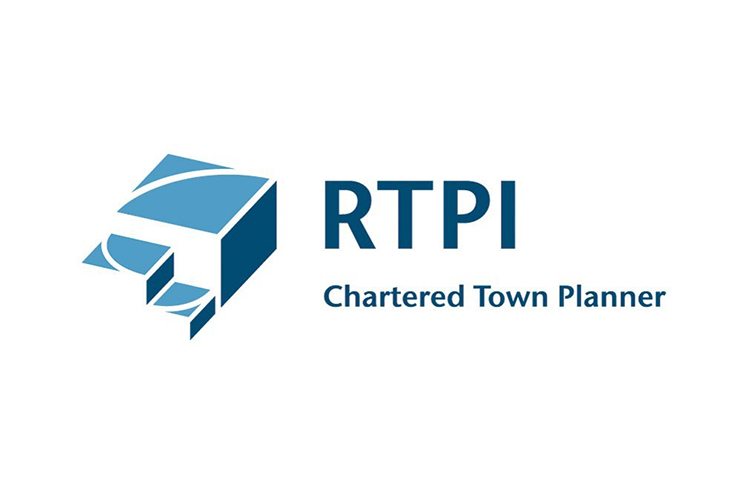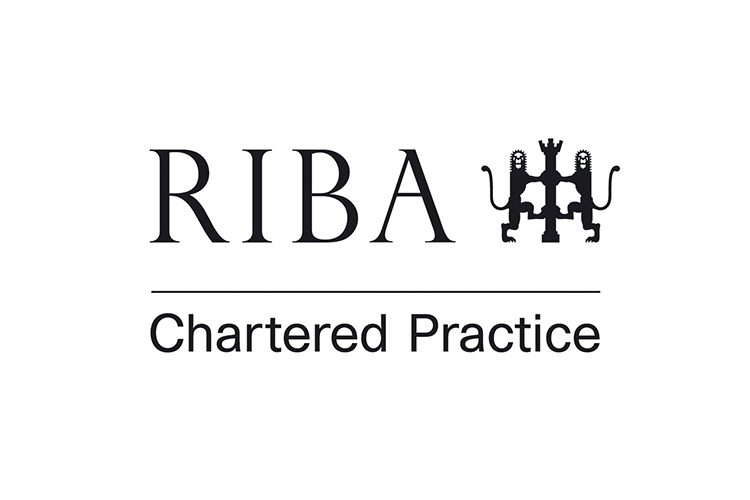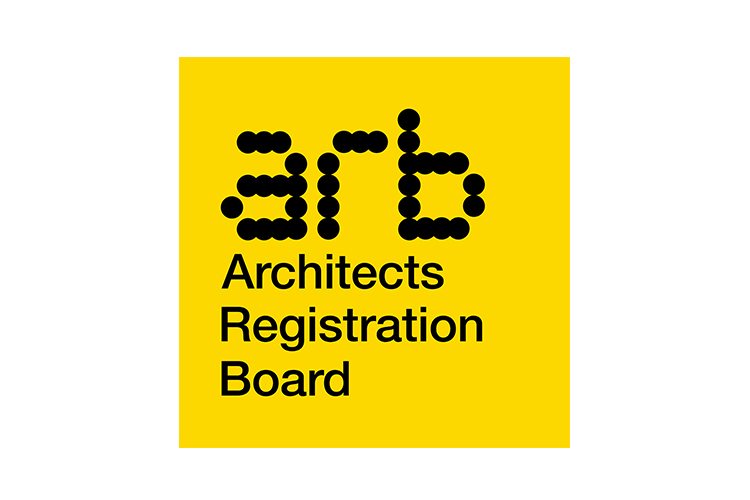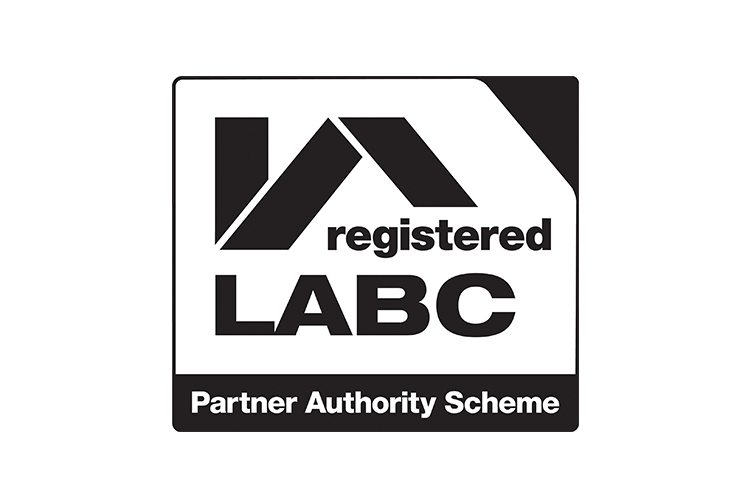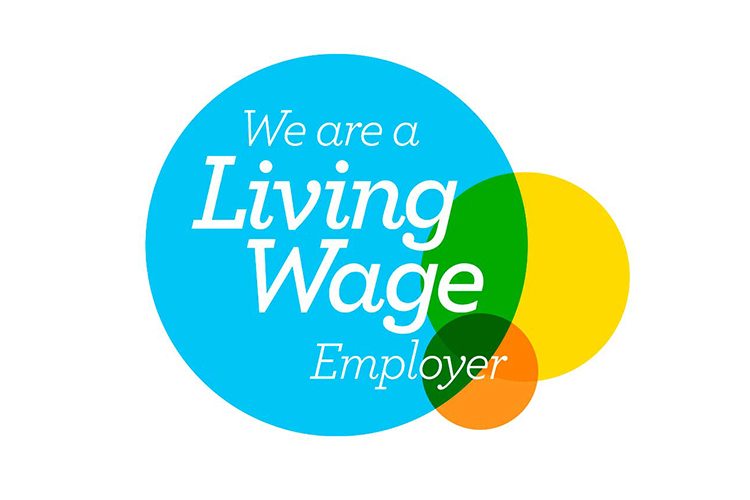Quickly find out if we have addressed your query
Quickly find out if we have addressed your query
Quickly find out if we have addressed your query
Planning & Architecture
Pre-application
Can I find out if I will get planning approval before I submit my application?
A formal pre-application planning process is a dialogue with the Local Planning Authority about your project. Following submission of drawings, sketches and other information which we provide, the Council give oral and / or written advice on how they feel about your ideas and how they think policies are likely to affect your subsequent planning application. The Council written report may indicate that what you want to do is likely to be approved, however it will often highlight aspects of the proposal which may lead to a refusal.
We often recommend that formal (paid-for) pre-application advice be applied obtained. Usually this is because the outcome of a planning application cannot be predicted with sufficient certainty. Perhaps the policies impacting on your proposal are complex, for example restrictions on the conversion of houses to flats, or perhaps issues raised are politically contentious, (eg affecting employment or transportation).
Outcomes from formal pre-applications vary immensely from one Council to another. Whilst a formal pre-application does not provide a definitive answer about whether or not your application will be approved, it can give a strong indication. Please also be aware that the advice may not be exhaustive and that the process may take a long time. In addition, we find that some advice is unduly negative or is not entirely impartial. Please contact us if you would like a ‘second opinion’ on any pre-application advice which you have received.
It is important therefore to understand that a pre-application process cannot give any planning approval and that it may not, in some cases, represent good value-for-money. Pre-application is however a process that is welcomed at government level because it is supposedly a mechanism via which planners and developers can work together pro-actively to achieve optimal results for the final development.
Get Planning and Architecture have experience in all London Boroughs and if you contact us we can give an opinion on whether formal pre-application will be of benefit to you and, if so, what you should do to get the best from this planning process.
Planning
What is the difference between Planning and Building Regulations?
In the UK, development and construction is regulated by government legislation, with Local Authorities being generally in charge of compliance. Planning can be seen as largely a matter of ‘policy’ rather than ‘rules’ and this means that Councils, each having unique detailed policy, have a big influence on the actual development which occurs in their borough. By contrast, building regulations are uniform throughout most of the UK and are generally controlled in a consistent way by Local Authorities, who can also permit private consultants, known as ‘Approved Inspectors’, to inspect building work and issue certificates of compliance.
Planning applications are therefore entirely different from applications relating to building regulations. Both regimes require applications before building work can commence. In exceptional cases, work can gain approval retrospectively, however this is not recommended because it carries high risk for the developer.
Planning policy and guidance seeks to control development and this results in restrictions on the use of land and buildings. Planning also controls appearance, landscaping, movement of vehicles and pedestrians and impacts on the environment as a whole.
Building Regulations set health and safety standards for the design and construction of buildings. It should be noted that there are other areas of legislation that may be vital for your building project and these might include Means of Escape, Disability Discrimination, The Party Wall Act, The Construction Design and Management Regulations 2015, (CDM15) and Approval by Thames Water or other infrastructure provider. Please contact us on customerservice@get-planning.co.uk if you would like advice on whether your project is impacted by any of the above.
How long does planning take?
Local Planning Authorities (LPA)’s, almost always your local Council, have a statutory determination period of 8 weeks from the date of validation for most common types of planning application, including ‘Householder’ applications. There are a number of variants, including advertisement applications, ‘major’ application, etc. each of which may have different time frames, all set at government level. For cases that are decided by a planning committee, there is likely to be a further delay to suit Council agendas.
In practice, consideration of most applications occurs within the statutory timeframe. Although the government provide monitoring statistics about the performance of each LPA, there are many instances when timeframes are not met. If you experience a delay beyond the statutory time frame, please get in touch with us and we can offer advice, for example about your right to appeal ‘non-determination’. Our experience suggests that it is often beneficial for you to agree an extension of time than to rush into an appeal process.
The 8-week period however is only a part of the whole planning process. If you choose to engage in a formal pre-application, there may be a period of several weeks before your application is submitted. Most Councils have a ‘service standard’ for pre-application, but is very often not met and there is no legal comeback on this as far as we know.
In addition, Councils have a validity process which screens applications against local and national validity requirements, (eg. for completeness and accuracy). Validity usually takes 3 to 10 working days. Unfortunately we see Councils rejecting applications on a routine basis, citing extremely minor discrepancies or omissions or because they have not recognised that you have paid the Council fee. It is frustrating for you as applicant, but the validity process can stretch to greater than 2 weeks.
What are the chances of success of my planning application?
Who decides?
The outcome of your planning application is usually decided by your Local Planning Authority, (LPA), almost always this is your local Council. The exact decision-making process depends on the type of application, but also on its complexity, political sensitivity and objections by interested parties. Therefore your application may ultimately be decided under ‘delegated powers’, (in other words, by planning officers), by a Council committee, or by the Planning Inspectorate if you appeal.
How is the decision made?
The mechanism which decision-makers use consists of ‘weighing’ the ‘material considerations’ which are relevant to the application. These material considerations can be positive, i.e. in favour of the application, or negative, contributing to a reason for refusal. Before you make your application, GPA can prepare a preliminary appraisal for you on request, in which we set out ‘pros’ and ‘cons’ of your proposal.
What are the material considerations?
Planning in the UK is largely controlled by policy rather than rules. Policy emanates from government, (including the National Planning Policy Framework, NPPF), but most policy affecting smaller applications derives from your Council’s Local Plan or other framework document. Policy represents the major portion of the ‘material considerations’, but it is evident from the extreme complexity and uniqueness of policy affecting any particular application that many applications are ‘tough to call’
Around 80% of applications get approved. Get Planning and Architecture can identify the material considerations and the ‘pros’ and ‘cons’ for you and this will give you a very good indication of the chance of success.
What do I do if my planning application gets refused?
If your planning application gets refused, you usually have 3 options worth considering:
- Appeal
- Re-apply
- Do nothing
In most cases it is worth making an appeal to the Planning Inspectorate. Based in Bristol, this is a government Department, dealing with all appeals in England and independent of your Local Planning Authority. Surprisingly, less than 20% of planning refusals get appealed and this may be because of fears about the cost, so please get in touch with us and we can advise you on both the costs and benefits of an appeal. If your planning application is for a Householder development such as a loft conversion or extension you will have 12 weeks from the date of decision to appeal. In most other cases you will have 6 months to appeal.
A re-application is very often an attractive option because there may be changes you can make to your proposal which make them acceptable to the Council. In the first instance, we suggest you obtain the officer’s report and review the strength of the planners’ concerns. We can do this for you and we will willingly advise you on the changes required to optimize the chance of getting an approval.
In some cases it may be worth following a ‘twin-track’ approach, consisting of both an appeal and a re-application. In other cases, we suggest a formal pre-application process. If there is little hope of a planning approval, we will give you frank and independent advice.
We are experienced in helping overturn planning refusals by both appeals and reapplication so please call us on 020 8770 3962 or contact us.
Why should I hire a Chartered Planner?
The Royal Town Planning Institute (RTPI) advises that the benefits of employing a Chartered Town Planner are:
- Providing accurate, impartial and cost-effective professional planning advice to ensure their client’s planning applications receive a smooth journey through an often expensive and complex planning process.
- Offering a fresh, independent approach to solving complex planning issues.
- Understanding how to add value and get the most for their clients from the planning system.
- Building effective relationships with the Local Planning Authority, community and other affected by their clients planning applications.
- Holding professional indemnity insurance, protecting them and their client.
- Direct instructions to Barristers, without their client having to use a solicitor as an intermediary.
Can you help us with procuring a specialist in support of a planning application and is this covered in your fees?
Councils frequently require specialist reports to set out evidence about issues affecting a planning application, for example about trees or transportation matters, and the types of supporting information which can be needed is listed in Councils’ planning ‘validity lists’. If a specialist is needed, you can appoint them at your discretion however we are happy to provide contact details of professional experts with whom we have worked previously. In accordance with our codes of professional conduct, we do not accept payments of any kind from other consultants or contractors. GPA does not appoint specialists directly so you as client are responsible for fees payable to such specialists. We work with a network of experienced specialists that includes experts on critical planning issues, including:
- Affordable housing and S106
- Sustainability and renewable energy consultants (SUDs, SAP, COSH and BREEAM)
- Structural Engineers
- Arboricultural Consultants
- Flood Risk assessment consultants
- Daylight consultants
- Topographical Surveyors
- Acoustic Consultants
- Highways and Transportation Consultants
- Planning Lawyers and Barristers
- Party Wall Surveyors
- Landscape Consultants
- Archaeological Consultants
If you need advice on whether a specialist is needed at all, please ask us. Within our agreed scope of service and fixed fee, we normally allow for assisting with these appointments and for liaising with specialists to support and optimize your planning process.
Is there a guarantee that the planning approval will be granted?
No planning consultant or other agent can honestly offer a guarantee that any planning approval can be given.
GPA can however offer an independent and professional appraisal of your application and identify the ‘material’ considerations which we can explain to you in simple terms as ‘pros’ and ‘cons’. This can give you a very useful indication of the likely outcome of an application.
In order to increase the likelihood of achieving your desired outcome, we may suggest steps such as a formal pre-application. This allows you to develop a constructive dialogue with the planners regarding what they will/won’t/may support. Councils generally welcome and recommend pre-applications and it shows that you, as the applicant, are willing to engage with them to develop a mutually acceptable proposal; they may even suggest design amendments which would mean a subsequent Full Planning application is more likely to get planning permission. In addition, other pre-application comments and feedback would be incorporated into the full planning application, to maximise the chances of a successful outcome.
Other strategic approaches that can increase your chances to get planning include our Development Appraisals, planning research, ‘twin-track’ applications, appeals and optimisation of your Permitted Development opportunities.
How do I view progress of an application?
For most planning applications, once the application is lodged, (most are lodged online now via the Planning Portal), a written receipt is issued. The process of consideration of your application then commences, firstly with a Council ‘validity’ phase, before moving on to a consultation period and only after that does a planning officer look at it critically. During the validity phase the Council may issue comments, culminating in confirmation that the application is valid, which usually takes less than 2 weeks. We ensure that you receive copies of all relevant communications throughout the entire planning process and we can explain the significance of these when necessary.
Once the application is valid, you can check on progress at any time via the Council’s website, however please note that the sites do not always offer the full picture. For example some information is redacted and there are sometimes omissions or errors in the information or statements available online. Councils vary in their approach to the information on their websites, (perhaps relating to politically sensitive issues or to planning enforcement). Not all Council websites are ‘user-friendly’ so we will happily explain progress on request and throughout the planning process in accordance with our service standards.
When an application is nearing the statutory date when a decision should be issued, usually 8 weeks from validity, we pay particular attention to monitoring progress and we contact officers to find out if they are supporting an approval. We will inform you of this dialogue and if necessary, recommend action to achieve an approval.
When the planning decision is issued, we will ensure you have a copy and we will issue advice regarding the reasons for the decision and the implication of any planning conditions and also what ‘next steps’ are open to you.
we normally allow for assisting with these appointments and for liaising with specialists to support and optimize your planning process.
Permitted Development
What is Permitted Development?
Permitted Development, commonly named ‘PD’ are a set of rights laid down by parliament that mean that additions and changes to many buildings are allowed. PD applies to most houses but also some commercial buildings. Many residential extensions can therefore go ahead without a ‘full’ planning permission from your Council. For example, a single storey extension to the rear or side of a house and most loft conversions are very likely to be PD providing they do not exceed size limitations. For commercial buildings, there is a range of Changes of Use that can occur, such as from office or shop to residential use, however the restrictions affecting commercial PD’s can be applied strictly by Councils to prevent such changes.
In almost all cases it is prudent to apply for a ‘Certificate of Lawful Development’, a certificate issued by your Council, which verifies that your development complies with the legislation. A certificate gives you the security of knowing that you can build what is shown on the submitted drawings and can be vital if you come to sell your house.
There are a number of ways in which some Councils resist Permitted Development. For example, an ‘Article 4’ direction may have been imposed, often relating to a Conservation Area, and this can remove PD.
How do I find out the limits of Permitted Development for my property?
The Planning Portal has a simple guide to how PD affects most properties.
- PD rules are complex and precise details are contained in Statutory Instruments, including the GPDO, (General Permitted Development Order, as amended), which can be studied via the government’s Planning Portal.
- Significant changes to Permitted Development rights came into effect in May 2013 and these were very significant relaxations of the limitations for house owners. For example, it became possible to extend a terraced or semi-detached house by 6m to the rear, rather than 3m. It is absolutely vital to follow correct procedure however and therefore an application to the Council, known as a ‘Prior Approval’ must be made. In essence, the Council write and ask your immediate neighbours to consent to your extension.
- There are very many limitations affecting your PD rights and these include the impacts of previous extensions; the position of your house relating to a road and planning conditions previously imposed on the property.
- There are no PD rights for flats.
- There are significant rights which apply to the use of land and building, including extensions to shops and commercial buildings.
- Get Planning and Architecture can give an opinion on how PD rights may assist your development and you can call us on 0208 770 3962 or email us at customerservice@get-planning.co.uk
Change of Use
What are Use Classes and how do they affect my project?
Changing the use of land or a building usually requires planning permission. Shops, restaurants, houses, offices and leisure facilities all come under different Use Classes, as defined by government.
If you propose to change from one use to another, even if this involves minimal building work or design modification, it is likely that you need to submit an application to the council. Definitions of each use class can be found on the Planning Portal, but please note that these definitions are subject to change from time to time. Rights to ‘move’ from one use class to another also change quite frequently and this is because governments seek to encourage or discourage proliferation of uses, (eg. relating to employment, or to ‘anti-social uses’ such as betting shops). The precise interpretations within each use class can be a ‘grey area’, for example in respect of HMO’s, (Houses in Multiple Occupation). In these contentious situations it is wise to be sure about the legality of your use, because Councils can take enforcement action if they become aware of uses that contravene policy.
GPA can advise you on request about whether your existing or proposed use is likely to be in breach of planning control. There is also some useful advice here.
Enforcement
Should I be worried about enforcement?
Yes, because your Council has far-reaching powers in relation to a breach of planning control and the penalties can be severe, including a requirement to demolish or even to pay back rental income or other money to the Council. If you acquire or build something for which planning permission has not been given, then planning enforcement is a very common consequence. One of the commonest causes of enforcement, especially in London, is the use of a house as 2 or more flats and if you have concerns about your property you can contact us and one of our experienced planners can review your case in absolute confidence.
The first indication of a live enforcement threat is often a visit by planning officers and this sometimes comes unannounced, prompted by allegations or complaints via Council websites. If you receive such a visit, or perhaps a letter or card from officers, please act quickly by consulting with an independent MRTPI accredited planning consultant. If a visit occurs, we strongly advise you to record all the details in writing, including the names and roles the visiting officers and dates of visits. It is unwise to postpone action or to avoid a response.
The Council has an Enforcement team who will normally issue a Planning Contravention Notice, (PCN). In essence the PCN asks you to confirm ownership of the property, but we would caution against giving any other information until you have taken professional advice. If the Council think that they have sufficient evidence, then they will subsequently issue an Enforcement Notice, (EN), however they may wait many months before doing so.
Please let us know if you think you have a threat of enforcement so we can advise you on the options available to you, including what happens if you do nothing. Your enquiry will be dealt with in absolute confidence.
Enforcement Notices can be appealed and it usually beneficial to do so. This is a service which Get Planning and Architecture can provide and with which we have significant experience.
Appeal
What do I do if my planning application gets refused?
If your planning application gets refused, you usually have 3 options worth considering:
- Appeal
- Re-apply
- Do nothing
In most cases it is worth making an appeal to the Planning Inspectorate. Based in Bristol, this is a government Department, dealing with all appeals in England and independent of your Local Planning Authority. Surprisingly, less than 20% of planning refusals get appealed and this may be because of fears about the cost, so please get in touch with us and we can advise you on both the costs and benefits of an appeal. If your planning application is for a Householder development such as a loft conversion or extension you will have 12 weeks from the date of decision to appeal. In most other cases you will have 6 months to appeal.
A re-application is very often an attractive option because there may be changes you can make to your proposal which make them acceptable to the Council. In the first instance, we suggest you obtain the officer’s report and review the strength of the planners’ concerns. We can do this for you and we will willingly advise you on the changes required to optimize the chance of getting an approval.
In some cases it may be worth following a ‘twin-track’ approach, consisting of both an appeal and a re-application. In other cases, we suggest a formal pre-application process. If there is little hope of a planning approval, we will give you frank and independent advice.
We are experienced in helping overturn planning refusals by both appeals and reapplication so please call us on 020 8770 3962 or contact us.
Building Regulations
What are Building Regulations and how do they affect me?
Building Regulations set health and safety standards for the design and construction of buildings. Prior to building work, an application should to be made to either an Approved Inspector (AI), or your Council. Further information can be found on the Planning Portal and a register of AI’s can be found here. The most important issues are often structural integrity and fire safety, but regulations also refer to energy efficiency and access by wheelchair users. Enforcement action can be taken by Councils if building work is not completed in compliance with the regulations. In order to avoid needless cost and disruption, it is wise to get approval of your detailed design before starting to build, however GPA can also help you with a retrospective application if needed.
What is the difference between Planning and Building Regulations?
In the UK, development and construction is regulated by government legislation, with Local Authorities being generally in charge of compliance. Planning can be seen as largely a matter of ‘policy’ rather than ‘rules’ and this means that Councils, each having unique detailed policy, have a big influence on the actual development which occurs in their borough. By contrast, building regulations are uniform throughout most of the UK and are generally controlled in a consistent way by Local Authorities, who can also permit private consultants, known as ‘Approved Inspectors’, to inspect building work and issue certificates of compliance.
Planning applications are therefore entirely different from applications relating to building regulations. Both regimes require applications before building work can commence. In exceptional cases, work can gain approval retrospectively, however this is not recommended because it carries high risk for the developer.
Planning policy and guidance seeks to control development and this results in restrictions on the use of land and buildings. Planning also controls appearance, landscaping, movement of vehicles and pedestrians and impacts on the environment as a whole.
Building Regulations set health and safety standards for the design and construction of buildings. It should be noted that there are other areas of legislation that may be vital for your building project and these might include Means of Escape, Disability Discrimination, The Party Wall Act, The Construction Design and Management Regulations 2015, (CDM15) and Approval by Thames Water or other infrastructure provider. Please contact us on customerservice@get-planning.co.uk if you would like advice on whether your project is impacted by any of the above.
Do I need a structural engineer for an extension?
The input of a Chartered Structural Engineer is typically required for a number of reasons, the most important one being to demonstrate to an Approved Inspector that Building Regulations are to be met. Confirmation that foundations are appropriate is almost always needed, but also perhaps for other structural elements, such as steelwork, especially relating to roof structures. The structural engineer will often give useful information about the structural condition of your existing building and the ground on which the new extension is to be constructed and he or she may wish to observe ‘intrusive’ investigations, (such as a trial pit), in order to provide the necessary advice. In our experience a Structural Engineer is likely to be needed therefore, even for a small project.
The fees of specialist consultants, such as a Chartered Structural Engineer or Approved Inspector are excluded from our work, as defined in our written agreed scope of service. We do not engage engineers directly, but our scope usually includes liaison with them for the purpose of obtaining a ‘Plans Certificate’.
Would structural engineering design work be included in the architectural service?
We are not structural engineers and we believe it is best that you as the Employer should make an informed choice about which engineer you prefer to work with. We work with many engineers and other specialists and we are able to use our considerable experience in the field to help you appoint a consultant best suited to your project. Please note that it is your role to inform us of the details of any consultant’s appointment in order that we can carry out our own duties effectively in the interests of your project.
Within our written agreed scope of service we can also assist with a brief to your Structural Engineer. We can liaise with them and review their work to ensure that it accords with our architectural work. If requested to do so, we will submit their drawings and calculations to an Approved Inspector for building regulations approval, however it is customary for engineers to send the information directly to the AI or Local Authority Building Control Department.
Re-application
If my application is facing a refusal, is there a cost for altering drawings or re-applying?
Probably. Whilst we do make great efforts to get planning for you by liaising with the Council and we will advise at the outset if we think that your planning application is likely to be significantly challenged by planners. The Council decision depends largely on the extent to which your proposal conflicts with written policy, for example in terms of the scale of extensions and in particular the impact of your proposal on neighbouring property.
Please be assured that you will be fully informed about all design details and rationale and also of all our communications with the Council. In the event that it becomes apparent that a significant design change is necessary in order to secure a planning approval however, we may recommend that further architectural, or planning, or other specialist consultant’s work be undertaken, (such as a daylight study). This additional work may amend your existing application but in some cases it is more beneficial for you if a re-application is made.
We generally allow for minor amendments (perhaps requiring a maximum time input of 1 or 2 hours), but if we have to carry out additional work outside the scope of the written agreement between us, then there is likely to be an additional charge,. We will of course liaise with you to arrive at mutually acceptable additional fee, which will be calculated on a rational basis. In accordance with the strict codes of conduct which regulate our services, we will always agree any additional cost in writing before proceeding. In all cases, any costs required for other consultants or Council fees lie outside the scope of our service and fee agreements.
Planning obligations (CIL & Section 106)
What is the Community Infrastructure Levy (CIL)?
When applying for planning permission it is prudent to find out the cost, if any, of the Community Infrastructure Levy (CIL). CIL is a charge that councils, authorities and the Mayor of London levy on developments like new houses or flats, residential extensions and commercial development.
CIL is a ‘planning gain’, introduced by the Planning Act 2008 as a mechanism for local authorities in England and Wales to aid delivery of infrastructure in their area, such as roads, flood defences, schools and parks. It came into force through the Community Infrastructure Levy Regulations 2010. Virtually all development is subject to the Community Infrastructure Levy (CIL) regulations, however the level of contribution that you have to make varies. Calculating the cost can be complex. Small extension and certain other developments such as ‘self-build’ can be excluded, so it is wise to study guidance. Each local authority sets a charging level and you can see the basis on which this is calculated on the Council websites. Please note that it can be subject to inflationary increase.
What is really important about the system is that applicants must provide relevant acceptance of their liability and it is vital to respond promptly to any Council communication concerning contributions, otherwise there may be significant financial penalties.
When we do work for clients in relation to CIL, such as completing the liability forms, we do so only under your specific instructions and in accordance with a written scope of service. We cannot accept liability for errors or omissions, or for any costs arising from this work and we therefore urge all clients to review all communications referring to CIL very carefully. Only the planning applicant can be liable for the CIL process and charges. CIL is only payable if you get planning approval and payment is generally due within 60 days of commencement of development.
Architectural Services
Why should I choose a RIBA chartered practice?
Only architectural practices that meet strict eligibility criteria can register as a Royal Institute of British Architects, (RIBA) Chartered Practice.
All RIBA accredited Chartered Practices:
- Employ the required number of individual RIBA Chartered Architects.
- Have appropriate Professional Indemnity Insurance.
- Have an effective Quality Management system.
- Have comprehensive Health and Safety and Environmental policies in place.
- Are expected to conduct themselves in accordance with a Code of Conduct in a manner appropriate to their status.
They are committed to excellence in design and customer service. That’s why the RIBA only promotes accredited Chartered Practices to clients.
How do I know if someone is an architect?
The title ‘architect’ is protected by law (Architects Act 1997), so that only those who have undergone rigorous training, and fully qualified, can rightly use it. Watch out for companies styling themselves as ‘architectural’ designers or similar wording as this is generally an indication that they are not eligible. All architects must be registered with the Architects Registration Board (ARB), with most taking up RIBA membership also. If an individual is without either credential then they may be operating unregulated, providing you with no guarantees of their ability to deliver the service you require. You can check if a person is a RIBA member on their directory.
General
What is CAD?
CAD stands for Computer Aided Design and in effect means creating plans and other drawings using computer aided technology.
Today there are many variants of CAD, however here at GPA we use the market-leading software ‘AUTOCAD’ and this has the benefit of integrating well with other consultant’s work.
Unlike other less reputable agents and drafting companies, we always ensure that all our work is created using the latest fully licenced software and this ensures that you as Employer remain free from claims of copyright infringements.
CAD files are legally termed ‘instruments of service’ and GPA have a policy of not releasing such files unless a written licence, defining the purpose they are to be put to, is in place. This policy arises primarily from professional compliance and liability issues. In practice, we make pdf versions freely available and we can issue paper copies on request.
GPA firmly believe that hand-drawn design work, which is usually colour-rendered, can also make a valuable contribution to understanding design rationale. We encourage and promote these more traditional skills within our team in order to create high quality hand-drawn work when appropriate.

